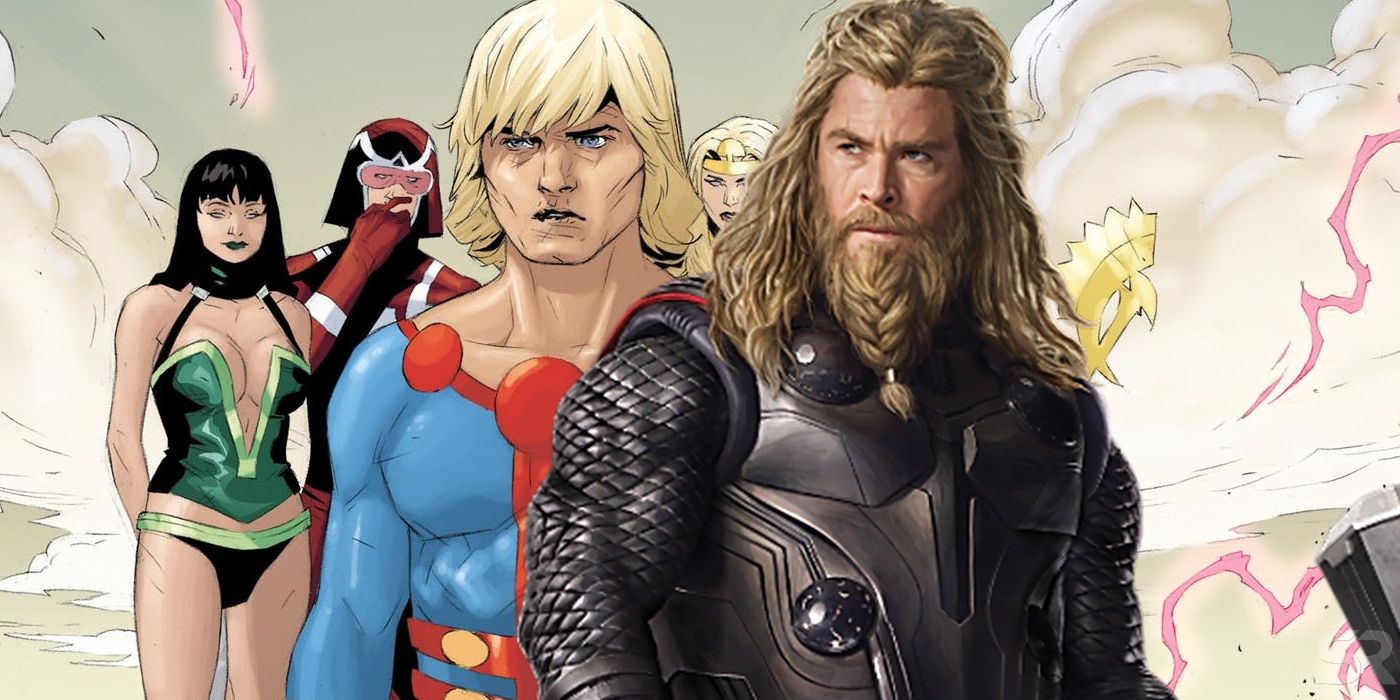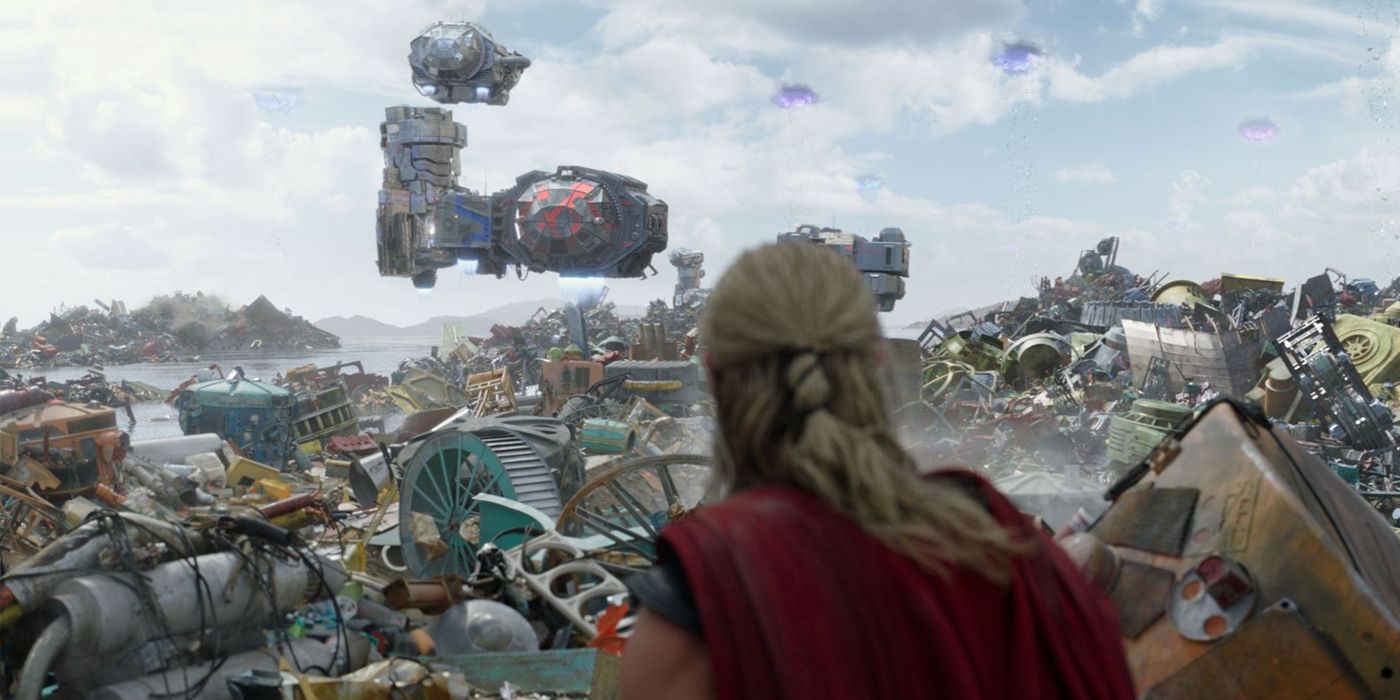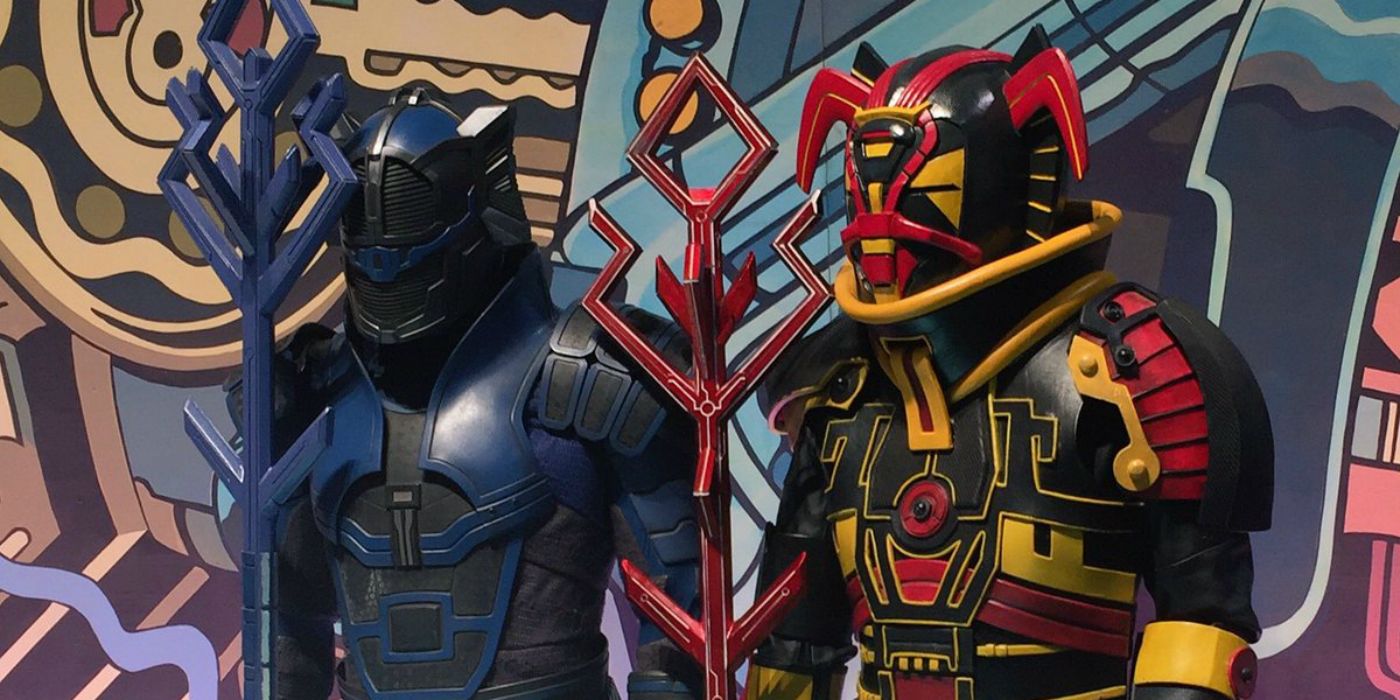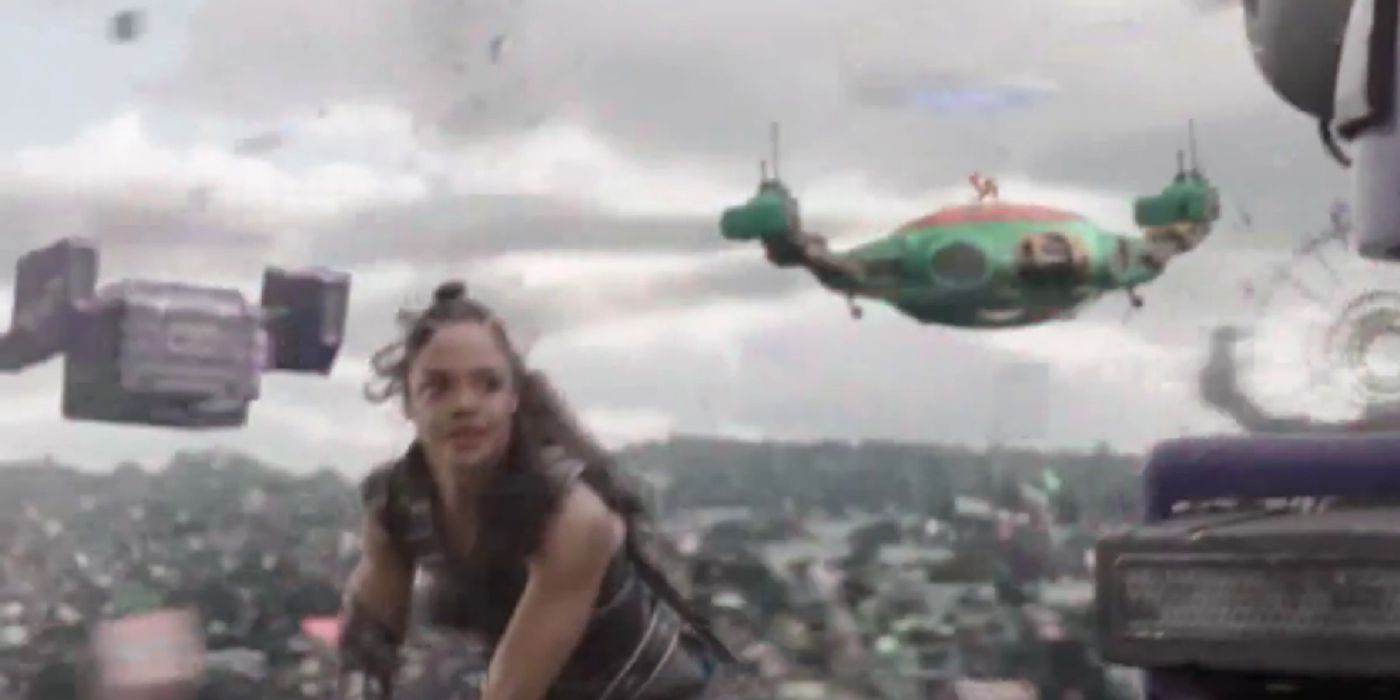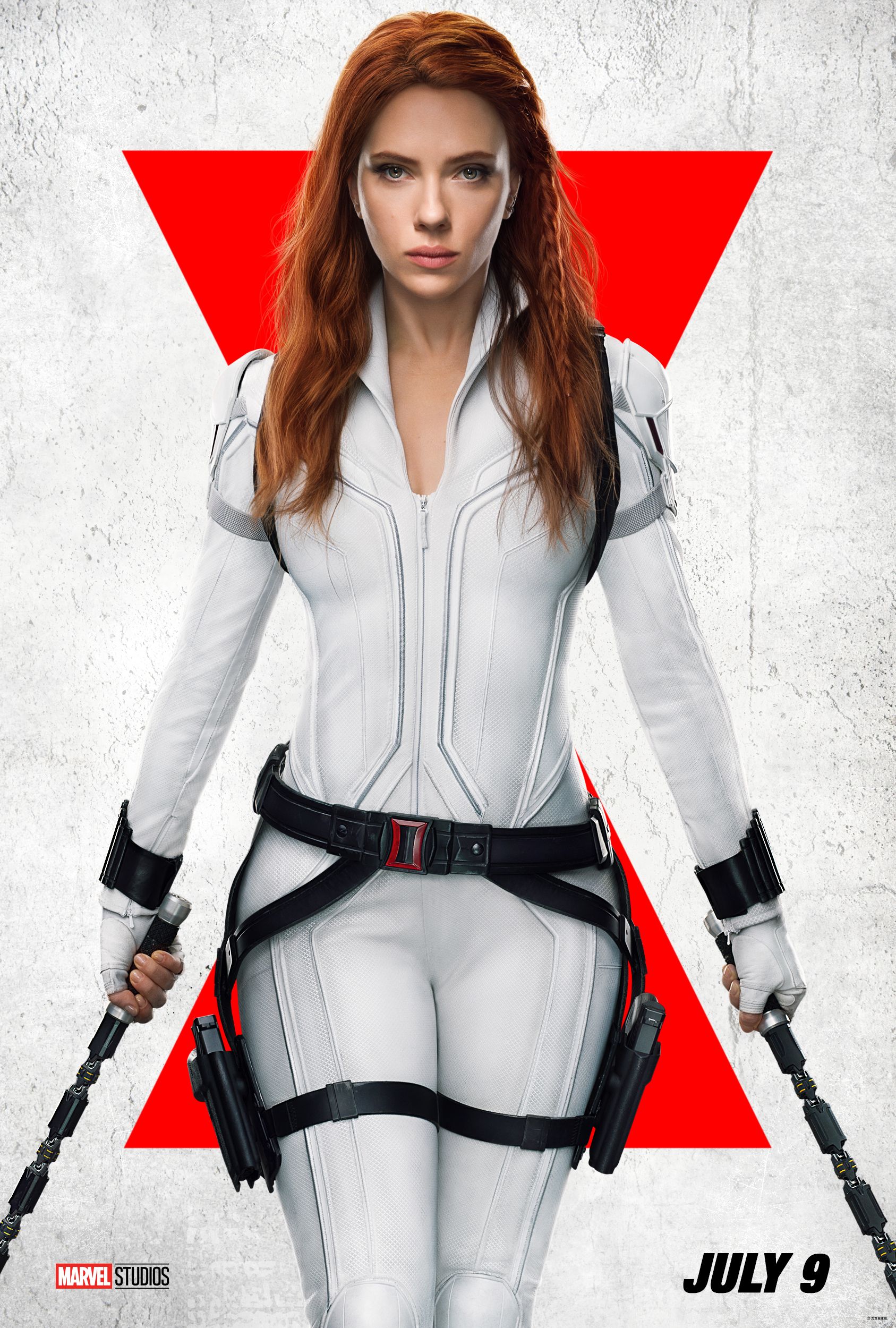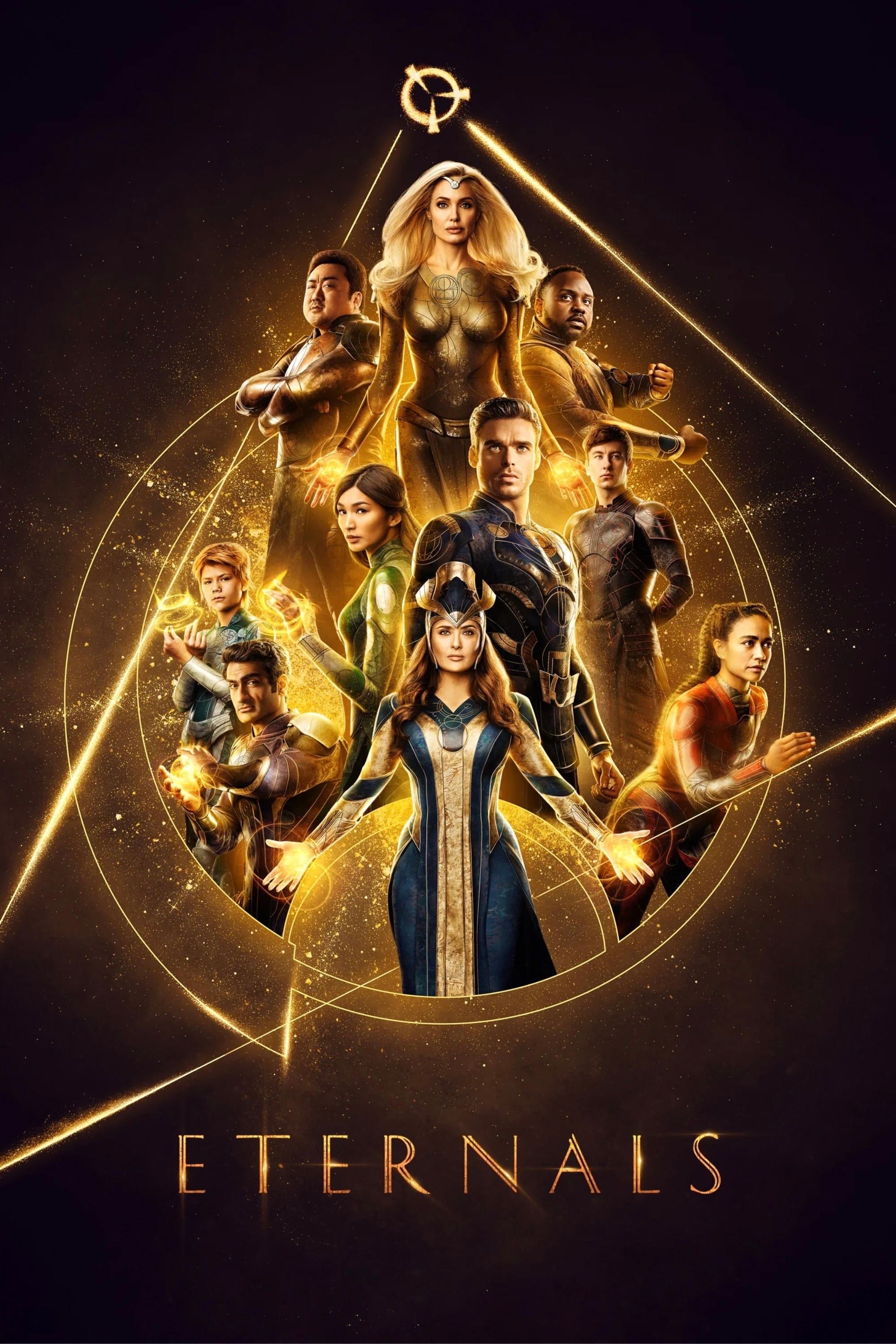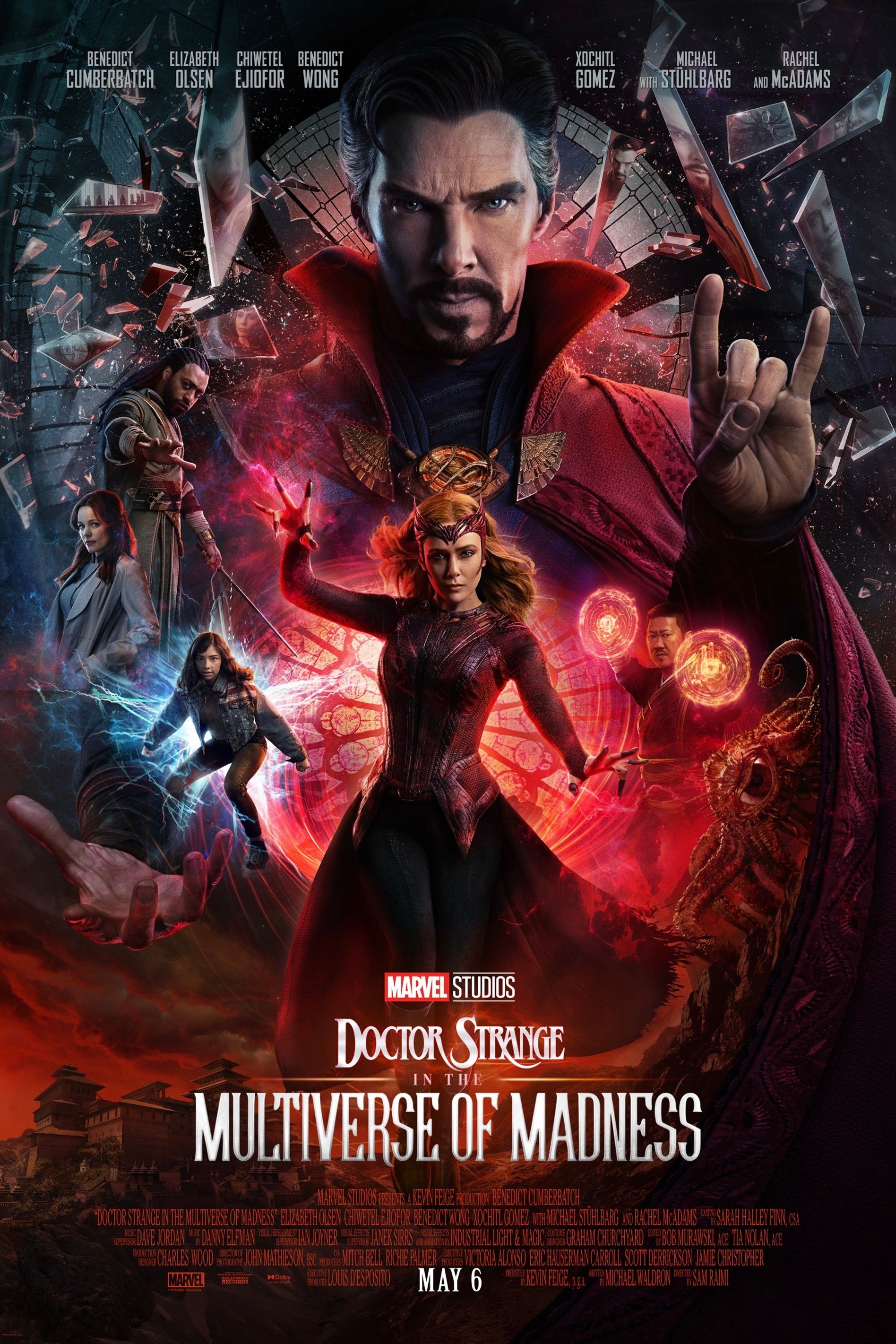Marvel's Thor: Ragnarok was surprisingly full of setup for this year's Eternals movie. Marvel Studios has always had a reputation for playing the long game. Characters and plot twists are teased years in advance; 2010's Iron Man 2, for instance, included Easter eggs pointing the way to both Wakanda and Atlantis.
Marvel's actually been setting up Eternals for quite a long time. In the comics, the Eternals are an evolutionary offshoot of humanity created millennia ago by a powerful race known as the Celestials. The Celestials have been featured prominently in the Guardians of the Galaxy films; the Collector revealed that the Celestials once used the Power Stone to judge entire worlds and civilizations, Knowhere is the severed head of a Celestial, and Guardians of the Galaxy Vol. 2 introduced Ego as the last of the Celestials.
All that setup is pretty obvious to anyone who's familiar with the comics. But what's generally been overlooked, however, is the fact that Thor: Ragnarok was packed with Eternals Easter eggs as well. In visual terms, the set design was a homage to legendary artist Jack Kirby, the man responsible for creating the Eternals. And it featured a surprising number of nods to the Celestials - so many that they simply have to be intentional.
The Planet Sakaar Was Littered With Celestial Corpses
Thor: Ragnarok saw the God of Thunder knocked off course while traveling through the Bifrost, and he wound up stranded on the junkyard planet of Sakaar. According to a Sakaar computer, this world "lives on the edge of the known and unknown. It is the collection point for all lost and unloved things." It seems Sakaar is at the center of a network of wormholes that crisscross the entire galaxy, some of which are actually found on Earth; the Hulk had unwittingly flown an Avengers Quinjet through one. It's unclear whether Sakaar's wormhole network was a natural phenomenon, or whether it was engineered. What is clear, though, is that Sakaar has been profoundly influenced by the Celestials. According to the Marvel Studios Visual Dictionary, the surface of Sakaar is littered with parts of Celestial corpses.
That immediately raises the possibility Sakaar was once a Celestial stronghold. In Guardians of the Galaxy, the Collector suggested the Infinity Stones were originally cosmic forces that survived from the previous universe. They were "forged into concentrated ingots" by unknown beings, and many MCU viewers have speculated the Celestials were the ones who did this. Certainly the Celestials have been linked to two of the Infinity Stones, with Vormir described as "the center of Celestial existence" by Nebula in Avengers: Endgame and an ancient Celestial shown using the Power Stone in Guardians of the Galaxy. If they also possessed the Space Stone, then they'd surely be able to use it to create permanent and enduring wormholes across the cosmos, just as Odin used it to repair the Bifrost. It's therefore possible Sakaar served as a base for the Celestials, who traveled across the stars with ease thanks to the wormholes.
The Grandmaster's Guards Look Like Celestials
Whatever the truth may be, the Marvel Studios Visual Dictionary clearly establishes some sort of explicit link between Thor: Ragnarok's Sakaar and the Celestials. That makes some of the costume designs particularly interesting, because they reference the Celestials. The most prominent examples are the Grandmaster's guards, whose armor is visibly Celestial in design. The helmets in particular are reminiscent of a Celestial named Ziran the Teser; in the comics, he subjects living beings to a series of tests in order to assess the stability of their genetic sequences. Ziran was introduced in 1977's Eternals #19, where he was targeted by the mad Eternal Druig.
But why did the Grandmaster's guards look like Celestials? In the run-up to Thor: Ragnarok's release, there was speculation they could actually be Celestials. That seems unlikely, however, given they didn't demonstrate such cosmic power. A more reasonable explanation would be that the Grandmaster had seen the bodies of the Space Gods, and was impressed by them. Thus he dressed his guards in Celestial garb in order to show himself as greater than even the gods. That would suit his ego.
Thor: Ragnarok Also Had An Eternals Spaceship
Thor: Ragnarok had one more Celestial Easter egg. One key scene in Act 2 sees the God of Thunder pursued by the Grandmaster's forces. Valkyrie is forced to help him escape by jumping from ship to ship, sabotaging and destroying them. Although it's easy to miss, in the background there's a Celestial spaceship lifted straight from Eternals #2. In the comics, this vessel is piloted by Arishem, one of the most important Celestials, who led several of their visits to Earth. He judged Earth millennia ago, and was personally responsible for the Great Cataclysm that sank the continent of Lemuria - the basis for the legends of the Flood and Atlantis.
The scale seems to be very different, however; in the comics, the ship was a massive vessel, whereas in the movie it appears to be of normal size. But that shouldn't come as much of a surprise; Guardians of the Galaxy Vol. 2 revealed the MCU's Celestials are very different to the comics. Readers will be familiar with the Celestials as gigantic "Space Gods" who loom over the Earth like a colossus, but in the MCU the Celestials are energy beings who lack a permanent physical form. They can use sheer force of will to create bodies for themselves, which means they could be as large or as small as they wish. That neatly explains why a Celestial ship could be small, while the severed head of a Celestial could still be large enough to become the mining establishment of Knowhere.
There's a sense in which Marvel's interest in the Eternals is something of a surprise; the powerful quasi-human beings have never exactly been an A-list franchise. In fact, while they were created by the legendary Jack Kirby, the Eternals' comic soon wound up closing down due to lack of sales. Still, a close examination of Thor: Ragnarok certainly proves that Marvel Studios has been setting up the MCU's Eternals for a lot longer than anyone thought. Given that that's the case, it's safe to assume the Eternals haven't just been set up at a whim; rather, they're a core part of Marvel's still-mysterious Phase 4 plan. It will be fascinating to see whether that plan includes a return to Sakaar, and an explanation of its mysterious ties to the Celestials.

